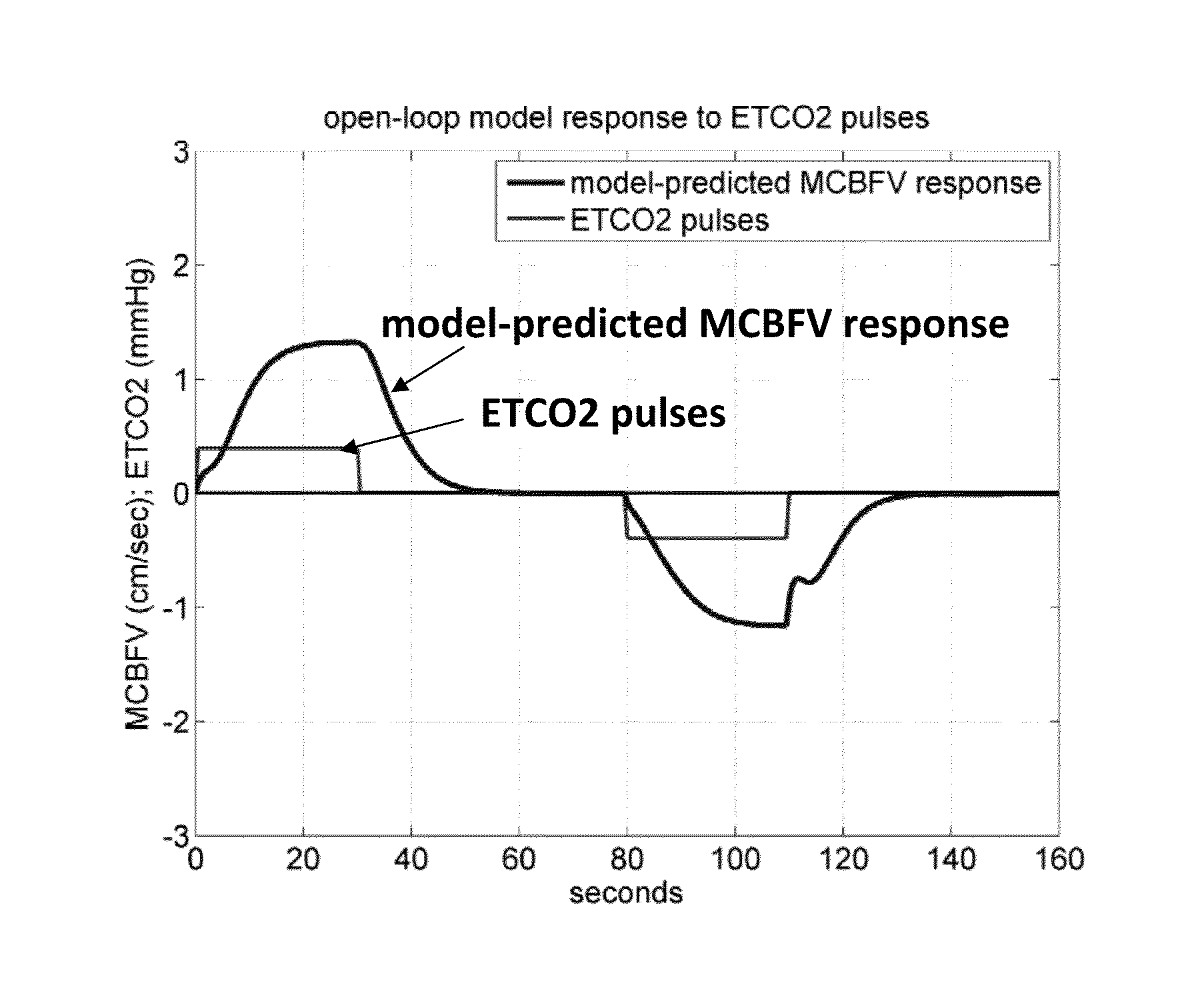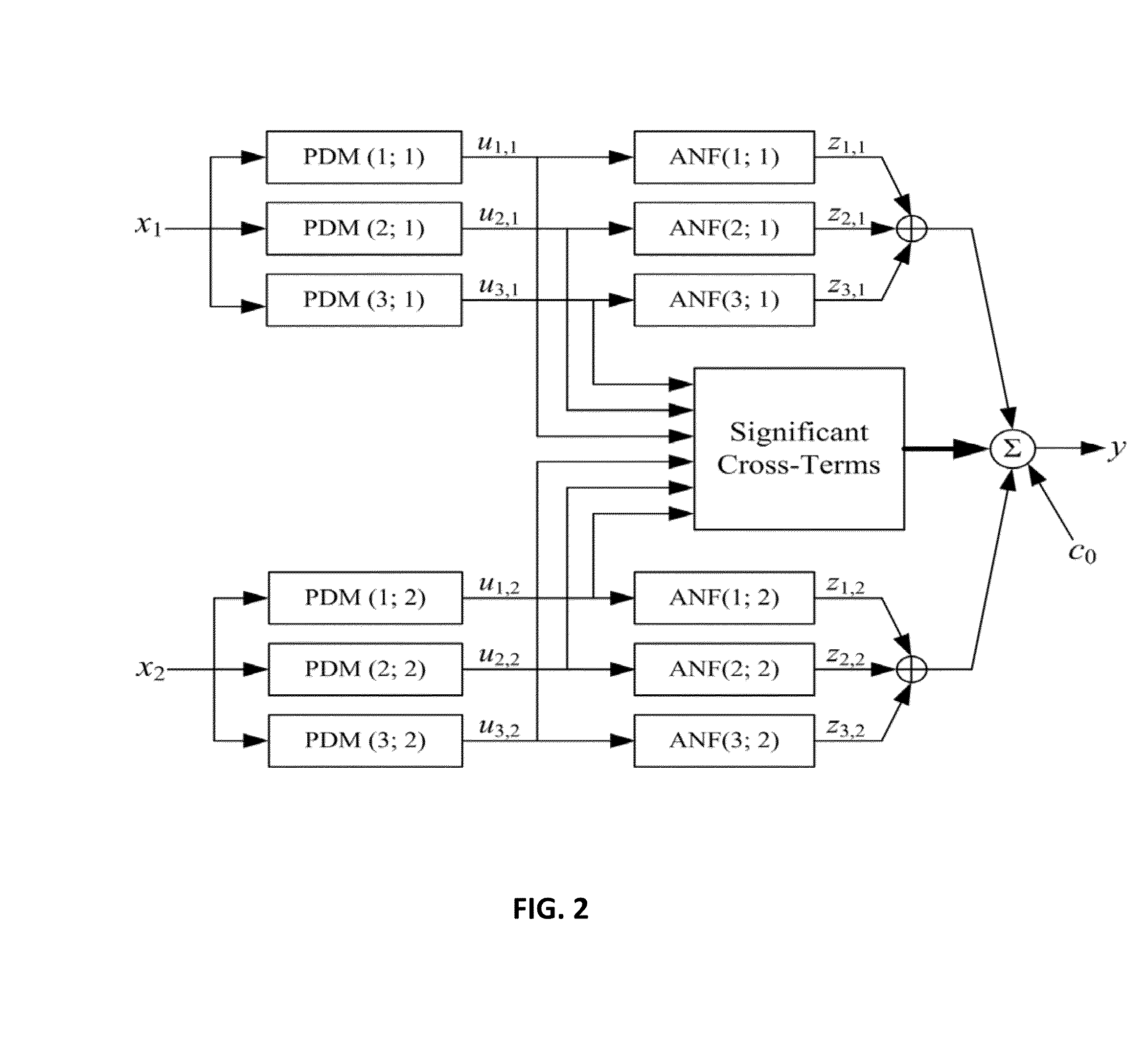Method for Quantitative Diagnosis of Cerebrovascular, Neurovascular and Neurodegenerative Diseases via Computation of a CO2 Vasomotor Reactivity Index based on a Nonlinear Predictive Model
a nonlinear predictive model and quantitative diagnosis technology, applied in computations using non-denominational number representations, instruments, digital data processing details, etc., to achieve reliable and sensitive “physiomarkers
- Summary
- Abstract
- Description
- Claims
- Application Information
AI Technical Summary
Benefits of technology
Problems solved by technology
Method used
Image
Examples
Embodiment Construction
A. Overview
[0025]The modeling methodology required by the invention utilizes the key concept of Principal Dynamic Modes (PDM) which has been pioneered by the inventors and has been elaborated in a recent monograph [46]. While one embodiment is illustrated in this application, many variations exist that will not limit the general applicability of the method or compromise the integrity of the requisite data. The method comprises the following computational steps:
B. Estimation of the PDMs of Each Subject
[0026]The PDMs of each subject are estimated from the collected beat-to-beat time-series data of mean cerebral blood flow velocity, mean arterial blood pressure and end-tidal CO2 (obtained by a variety of non-invasive methods from human subjects in a clinical setting) over several minutes. The beat-to-beat measurements are pre-processed to remove artifacts and they are re-sampled evenly over time, typically at 2 samples per second. Very low frequency trends or cycles are removed prior t...
PUM
 Login to View More
Login to View More Abstract
Description
Claims
Application Information
 Login to View More
Login to View More - R&D
- Intellectual Property
- Life Sciences
- Materials
- Tech Scout
- Unparalleled Data Quality
- Higher Quality Content
- 60% Fewer Hallucinations
Browse by: Latest US Patents, China's latest patents, Technical Efficacy Thesaurus, Application Domain, Technology Topic, Popular Technical Reports.
© 2025 PatSnap. All rights reserved.Legal|Privacy policy|Modern Slavery Act Transparency Statement|Sitemap|About US| Contact US: help@patsnap.com



